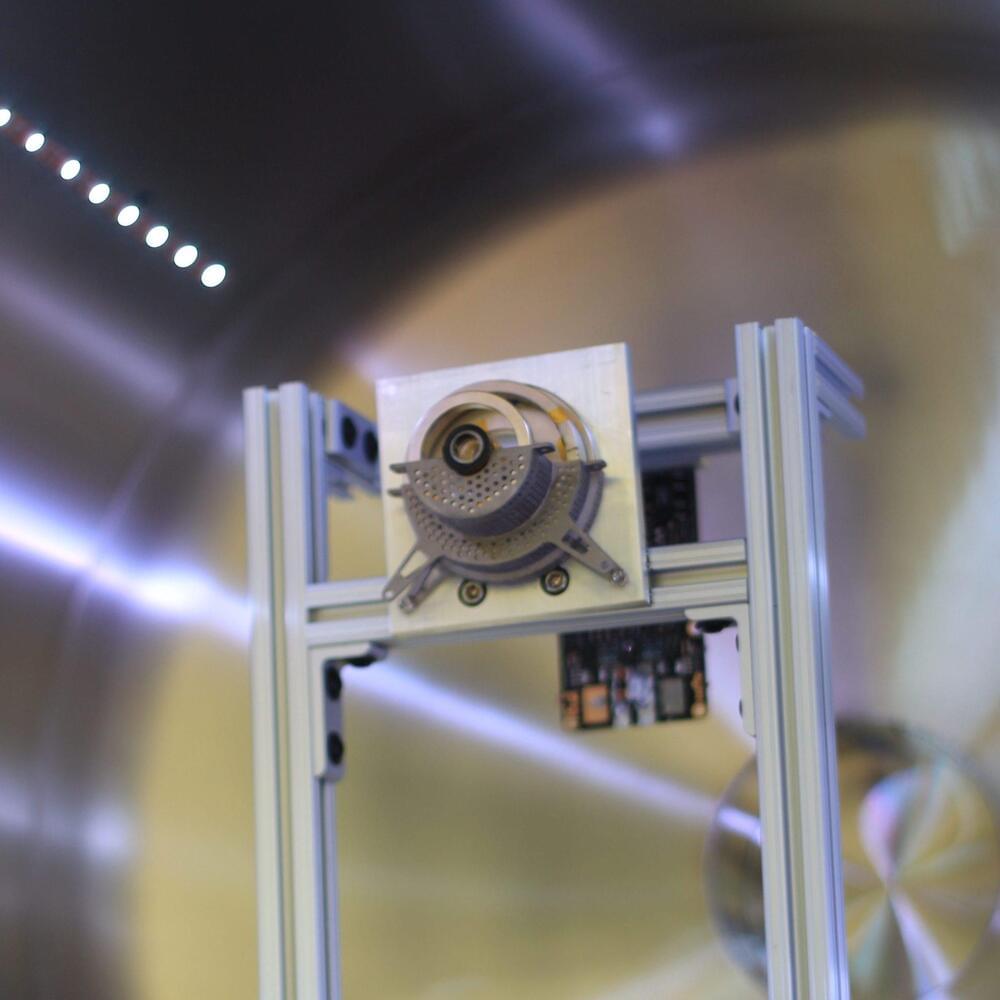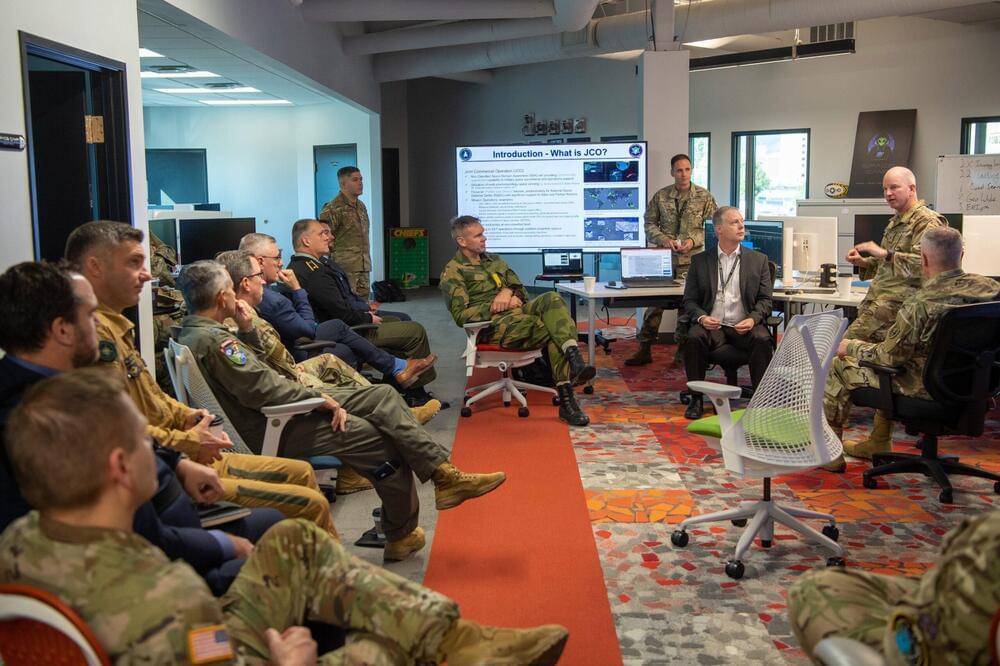SpaceX aiming for Saturday launch to deliver German military satellites from West Coast, with sonic booms likely.
Category: military – Page 45

Chinese brain warfare includes sleep weapons, thought control
I dont know about sleep weapons, it s possible probably. More concerning to me, i read a paper 20+ years back about cell towers and cell phone frequencies as a possible tool for mind control, some way connected to frequency of human brain.
China’s military is developing advanced psychological warfare and brain-influencing weapons as part of a new warfighting strategy, according to a report on People’s Liberation Army cognitive warfare.
The report, “Warfare in the Cognitive Age: NeuroStrike and the PLA’s Advanced Psychological Weapons and Tactics,” was published earlier this month by The CCP Biothreats Initiative, a research group.
“The PLA is at the forefront of incorporating advanced technologies such as artificial intelligence, brain-computer interfaces and novel biological weapons into its military strategies,” the think tank’s analysts concluded.

L3Harris gets green light to produce 16 space-based hypersonic missile trackers
WASHINGTON — Defense contractor L3Harris announced Dec. 20 it has received approval from the Space Development Agency to move into production on 16 satellites designed to detect and monitor hypersonic missiles aimed at the U.S. or its allies.
L3Harris said its satellites cleared a critical design review and a production readiness review.
The Space Development Agency (SDA) is a U.S. Space Force organization building a layered network of satellites known as the Proliferated Warfighter Space Architecture. It includes a Transport Layer of interconnected communications satellites that will transmit data collected by the Tracking Layer of sensor satellites.

Space Force eyes a future of speed and agility in orbit
For its latest Hyperspace Challenge accelerator, the U.S. Space Force selected three startups specializing in satellite propulsion, picks reflecting the military’s growing interest in nimble satellites that can maneuver to outplay adversaries.
This marks a shift for the Pentagon, which traditionally has launched satellites into orbit and restricted their movements to conserve fuel. But with rivals fielding maneuverable spacecraft, U.S. officials are calling for a shift to “dynamic space operations,” enabled by autonomous refueling and other in-orbit services.
“Having the ability to refuel would really open new possibilities,” said John Plumb, assistant secretary of defense for space policy. He said the Pentagon is encouraged to see commercial companies developing technologies for in-orbit logistics that also have significant utility for the military.
America’s Shaky Semiconductor Supremacy Over China
Like China, the US sees AI as a key to both a military and economic power in the 21st century. Both Republicans and Democrats in DC are concerned about the rate of Chinese advancement. In fact, the running joke on Capitol Hill is that the only thing they can agree on is The Chinese Threat.
Toward this end, Congress recently passed The CHIPS Act and the Executive Branch has been implementing trade controls to deny technology that they believe are critical for developing AI in China. While this desire is rational, it is unlikely to work in the mid-to long-term, and it will only increase geopolitical tension.
The US strategy of technology relies on seven realities that, while true today, are unlikely to all be true tomorrow.

U.S. Space Command declares ‘full operational capability’
WASHINGTON — U.S. Space Command, the Defense Department’s combatant command responsible for space operations, has achieved full operational capability, its commander Gen. James Dickinson announced Dec. 15.
In short, this means that U.S. Space Command is now fully up and running. It has the staff, infrastructure and plans it needs to handle its mission of conducting space operations and protecting American and allied assets and interests in space.
U.S. Space Command, established in 2019 in Colorado Springs, is tasked to monitor space activity and threats, support other military units with space capabilities like communications and surveillance, respond to crises involving space, deter aggression and defeat enemies if needed.
China’s Air Force simulates warplane maintenance with Microsoft headsets
A video released by a Chinese state broadcaster shows the use of Microsoft Hololens 2 to simulate maintenance on a warplane.
The Chinese military is reported to be utilizing mixed-reality goggles manufactured by Microsoft for equipment maintenance, as shown in a video released by a state broadcaster.
On Tuesday, CCTV-7, the military channel of the Chinese state broadcaster CCTV, broadcasted a brief clip depicting an engineer-in-training from the People’s Liberation Army (PLA) Air Force using Microsoft’s HoloLens 2 to simulate maintenance on a warplane.
In the provided video, a member of the PLA Air Force is seen donning the HoloLens 2 headset created by Microsoft. Before him, a 3D hologram displays an interface featuring Microsoft applications, according to the South China Morning Post (SCMP).

China’s Cyber Threat: Is U.S. Infrastructure at Risk?
The Chinese military has been escalating its cyber capabilities, posing a potential threat to key American infrastructure. This includes power and water utilities, as well as communication and transportation systems. Over the past year, hackers affiliated with China’s People’s Liberation Army have successfully infiltrated the computer systems of approximately two dozen critical entities.
These cyber intrusions are not isolated incidents. They are part of a broader strategy to develop methods that could cause panic, chaos, or disrupt logistics in the event of a U.S.-China conflict. The victims of these cyber-attacks include a water utility in Hawaii, a major West Coast port, and at least one oil and gas pipeline. There was also an attempt to breach the operator of Texas’s power grid.
China’s Military Linked to Cyber Infiltration of US Essential Services: Report
Takeaways:
• The Chinese military is reportedly increasing its attempts to infiltrate essential infrastructure, utilities, communication, and transportation services in the U.S., according to anonymous U.S. officials and cybersecurity experts.
• Hackers linked with China’s People’s Liberation Army have infiltrated around two dozen essential service entities in the past year, including a water utility in Hawaii, an oil and gas pipeline, and a West Coast port.

Wild new NASA plasma tech reduces drag during hypersonic flight
According to a notice the agency posted on the government contracting portal SAM.gov on Thursday (Dec. 7), the technology was developed by researchers at NASA’s Langley Research Center in Virginia and has been studied for use in a simulated entry into Neptune’s atmosphere. A separate 2021 study of the same technology studied it for use in the atmosphere of Mars.
Related: Space Force wants ‘Foo Fighter’ satellites to track hypersonic missiles
The agency claims its MHD system is “simpler than conventional methods for control of hypersonic craft (e.g., chemical propulsion, shifting flight center of gravity, or trim tabs) and enables new entry, descent, and landing mission architectures.”